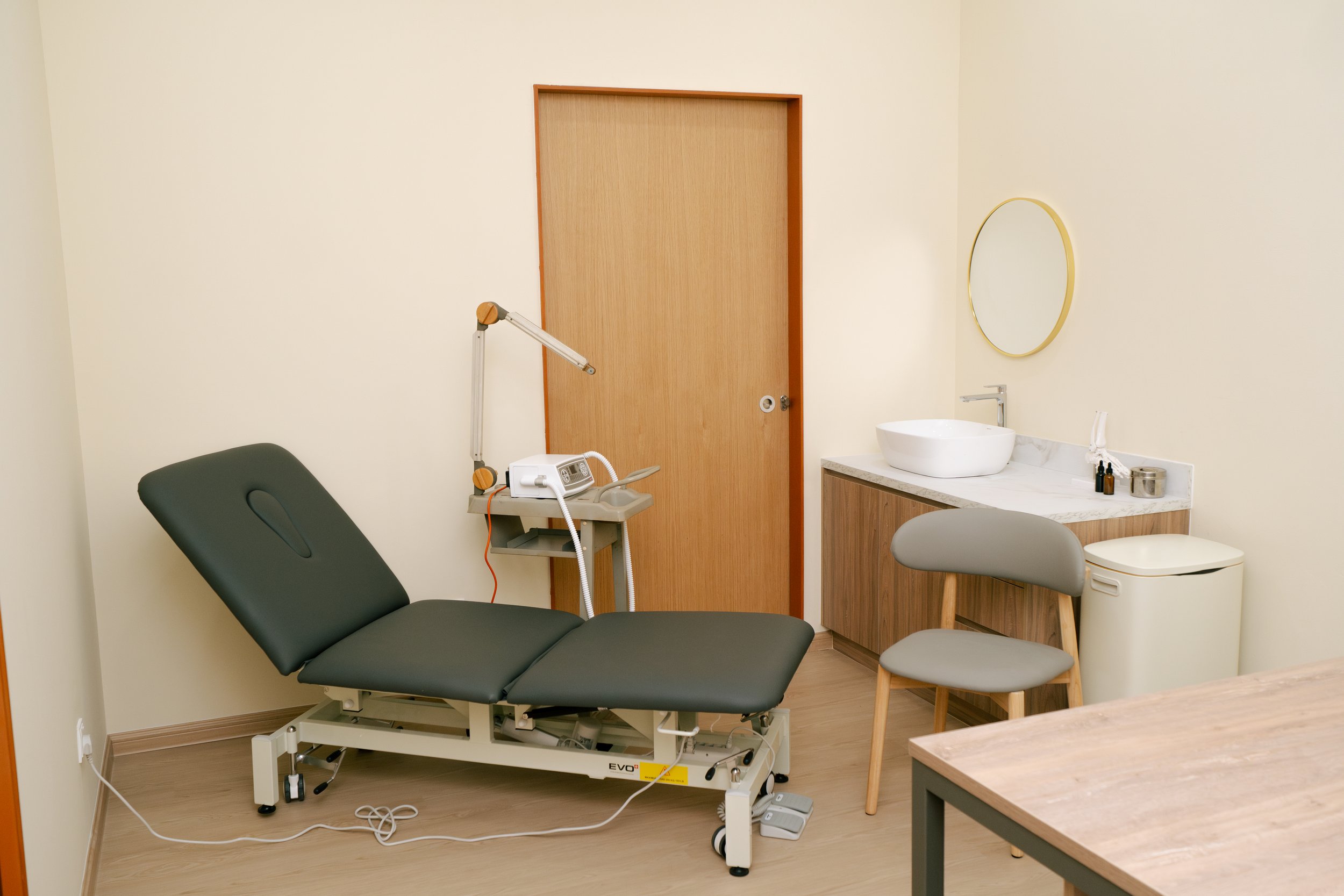
Cracked Heels
What Are Cracked Heels?
Cracked heels occur when the skin around your heel becomes dry, thick and less elastic, causing it to split under pressure. The condition may start with mild dryness and scaling, but as the cracks (fissures) deepen, they can cause discomfort, pain when walking, and increase your risk of infection — especially in those with diabetes or compromised circulation.
Causes & Risk Factors
The first stage of a cracked heel is typically the buildup of dry, hard skin or callus around the rim of the heel. This callus becomes less flexible over time. As the fat pad under your heel expands when you walk, it puts pressure on the dry skin, causing it to crack.
Factors that contribute to cracked heels include:
Prolonged standing, especially on hard floors
Wearing open-back shoes, thongs or sandals
Walking barefoot for extended periods
Overweight or obesity (increased pressure on the heels)
Long, hot showers or baths that dry out the skin
Skin conditions like eczema or psoriasis
Diabetes and other chronic health conditions
Poor hydration and inadequate moisturising habits
Symptoms of Cracked Heels
Thick, dry, flaky or scaly skin at the heel
Pain or tenderness when walking or standing
Visible cracks or splits, which may bleed
Itchiness or tightness in the skin
Redness, swelling or warmth (indicating possible infection)
For those with diabetes, even small cracks can pose a serious risk due to slower healing and increased infection risk.
Treatment Options
If your heels are only mildly dry or cracked, start by applying a high-urea moisturiser (available at pharmacies) two to three times daily. You may also gently use a pumice stone on the affected area after bathing — but avoid aggressive scrubbing or DIY razor blades.
If symptoms persist or worsen, we recommend booking in with one of our experienced podiatrists for professional treatment. Your appointment may include:
Mechanical debridement – Pain-free removal of thick, dead skin and cracks using sterile instruments
Dermal foot balm – Application of a high-strength urea-based moisturiser to promote skin healing
Heel strapping or dressing – To reduce movement and protect deeper cracks
Footwear advice – Guidance on shoes that provide better cushioning and reduce pressure
Pressure mapping analysis – To assess how you walk and offload pressure points to prevent recurrence
Custom orthotics – If your walking pattern is contributing to cracked heels, orthotics may be recommended
What Happens If I Ignore Cracked Heels?
Ignoring cracked heels can lead to:
Worsening pain and discomfort
Bleeding and open wounds
Cellulitis – a potentially serious skin infection
Diabetic foot ulcers in those with diabetes
More frequent podiatry treatment required to manage symptoms
Prevention Tips
The best way to manage cracked heels is through prevention and early care. Here’s what we recommend:
Moisturise daily with a high-urea heel balm (but avoid between the toes)
Wear supportive footwear and avoid going barefoot or using open-back shoes
Avoid long, hot showers that strip the skin of natural oils
Limit prolonged standing when possible, especially on hard surfaces
Stay hydrated to keep your skin supple
Use gentle exfoliation (like a pumice stone) 2–3 times per week
Book an Appointment
If your cracked heels are painful, persistent or bleeding — don’t delay. Book a consultation with one of our friendly podiatrists at KL Foot Specialist Podiatry. We’ll assess the cause, provide immediate relief, and work with you to prevent it from returning.
Call us or book online now
